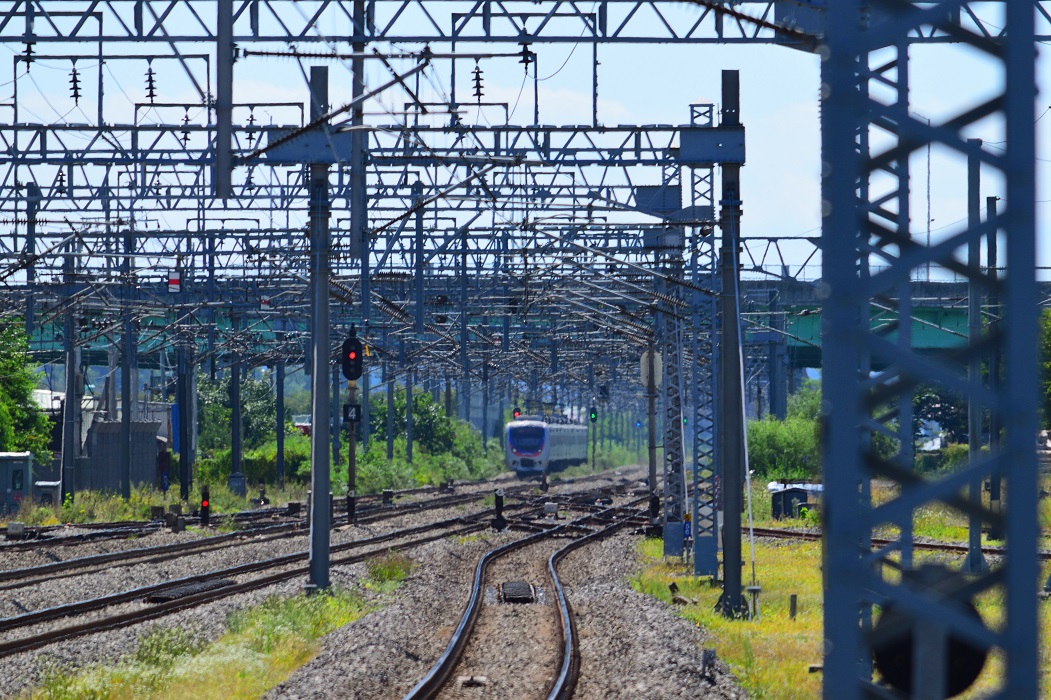Along Railway Tracks, Batteries are Everywhere
Application
April 16. 2024
3 min.
As it is the case with every critical equipment, railway infrastructure relies heavily on battery storage as backup power sources for transmission, signaling, at grade crossings, and for many other components.

In both locomotives and railcars, lead-acid batteries provide lighting, serve as backup energy source, or are used to start the mighty diesel engines. Meanwhile, lithium-ion battery sets are increasingly being deployed in electric or hybrid locomotives and multiple electric units, ensuring their uninterrupted operations and curbing energy costs. However, battery systems can also be found along the tracks, often those of the nickel-cadmium variety.
Let's start with where the electricity powering the trains and/or associated equipment actually comes from. It flows from the grid through dedicated substations which reduce the voltage and convert the electricity into the type (DC to AC) appropriate for the given electric traction system. As we covered earlier, larger substations need a backup power source in order to keep their monitoring, controlling and communications equipment live even if the mains power fails. The UPSs in traction substations are usually sized in lower hundreds of Ah and often consist of lead-acid cells.
In a similar function, batteries are deployed in many other components of railway electric power feeding systems as well. As detailed in the box at the end of the article, the voltage in the contact wire fluctuates depending on how much power is drawn. From feeders and booster transformers to the catenary itself, all of this equipment is kept safe from overvoltage or reverse current by relays. Especially if electricity supply from the grid is problematic, or for redundancy, these relays can be activated with power supplied from batteries sized in the lower tens of Ah.
Operational no matter what
Within the track system, the mechanical equivalent of a relay are railroad switches. In the past, the points were moved by a manually operated lever. But nowadays, this is often not even an option anymore simply because the weight of trains has increased and high-speed turnouts are ever more common, with their operation being beyond the physical strength of a person. Thus, most switches are remotely controlled by a so-called point machine and powered by an electric motor or a pneumatic or hydraulic actuator.
For redundancy, the switching station can be connected to a battery storage, or BESS, usually sized to provide 5 to 8 hours of autonomous operation. This period can be extended to days or even more than a week if the BESS is complemented by a solar panel. However, the location may be too remote for the switching station, signaling equipment or grade crossing to be easily and cost-effectively connected to the public grid in the first place. In this case, the PV provides all the power needed, as it is increasingly common along the railway that serves the southeastern regions of Mexico, for example.
Starting in the port city of Veracruz, the single-track line is used almost exclusively for the transportation of freight. After leaving the coastal region, the non-electrified railway runs through many areas with less developed infrastructure. Nevertheless, there is much equipment which needs a reliable source of power, including relays, electronic track circuits, wayside signals and switch detection circuits. These 12 V installations will rely entirely on solar panels supplemented by GAZ' Ni-Cd batteries of the Sol G range, while the ultracapacitors operating the 24 V power switch machines will be connected to a battery as well. As of April 2024, either setup is being fitted across roughly two hundred locations along the railway.
The chemistry is ideal for outdoor applications as Ni-Cd cells work flawlessly in a very wide range of temperatures, including the heat in southern Mexico capable of prematurely degrading lead acid batteries. Ni-Cd batteries offer a long service life of 15 or even more than 20 years, and distinguish themselves by exceptional reliability. They are very rugged, capable of easily withstand the conditions prevalent along railways, including dust and heavy vibration. And last but least, Ni-Cd-based battery systems are cost-effective to procure, simple to install and efficient to maintain.
Generally, the demand for battery storage solutions is steadily growing in the railway sector. Also, because the rolling stock is packed with batteries as well, not to mention the advent of BELs and BEMUs. What do these abbreviations stand for? Find out in an article about on-board applications of batteries soon to be published on GAZ Academy.
| Basically, the heavier and faster the rolling stock, the higher the voltage needed – trams, for instance, are typically fed with 600 or 750 V DC, suburban trains around 1,500 V DC, and regular trains often with 3 kV DC or 15 kV AC. However, many systems in Europe and elsewhere are being upgraded to, or newly built with 25 kV AC which has until recently been primarily used for high-speed trains. Now these are only nominal figures as the line voltage fluctuates significantly with load and distance from the substation. It drops when traction load rises, but may also increase for instance when the train moving along the given section uses the energy it has recovered from breaking. The basic means of keeping the current in AC systems at an optimal level, as well as to eliminate stray currents which could interfere with communication lines and other equipment, is booster transformers positioned every 5 or so km along the line. However, peak power demands can be easily covered with BESSs which also absorb excess power when the opposite situation arises, and help to reduce losses during the transmission along the feeding line. Such installations are most often found within subway systems, and increasingly rely on Li-ion batteries. But flywheels are being also considered or trialed for this application, such as other battery chemistries including Ni-Cd or Ni-MH. Beyond that, BESSs may allow for the integration of railway systems into smart grids of the near future. This would both optimize the utilization of energy from renewable sources across the entire grid, as well as help railway operators to curb their energy costs. |
Podobné články
Securing the Flow: In Substations, Batteries Are Everywhere
March 6. 2024
2 min.
VíceTunnels Are Marvels of Engineering. And Not Just Because They Were Drilled Into Rock
November 29. 2023
2 min.
VíceOn the Wings of Electrolysis
March 9. 2023
2 min.
Více



